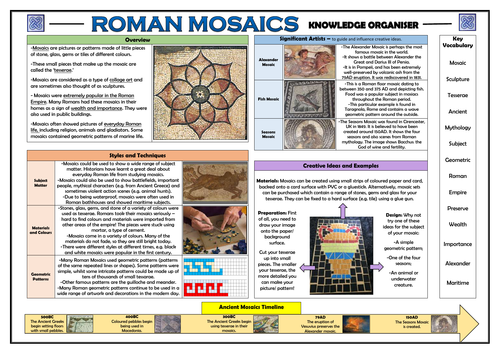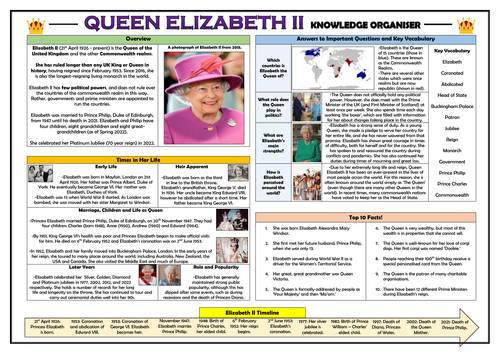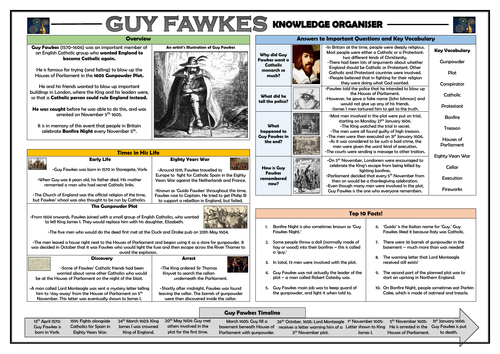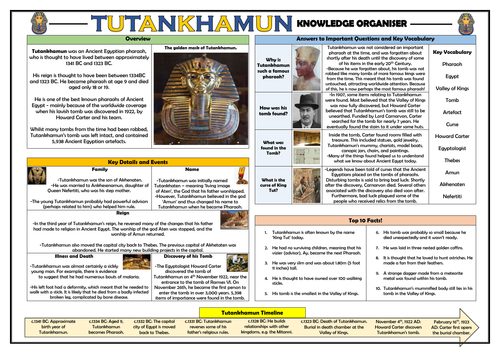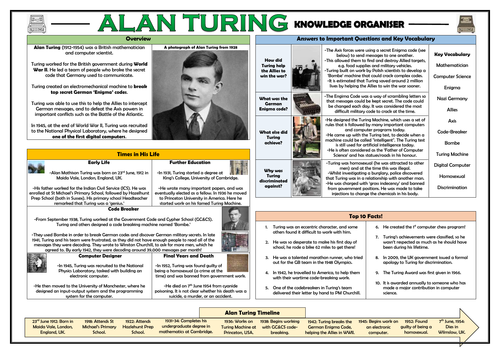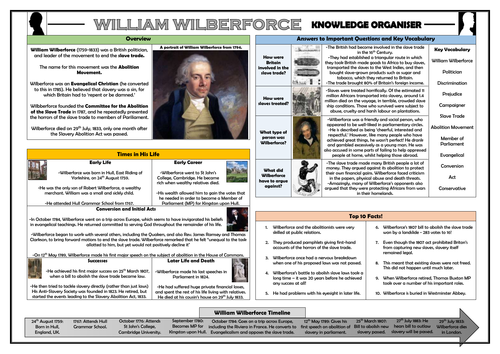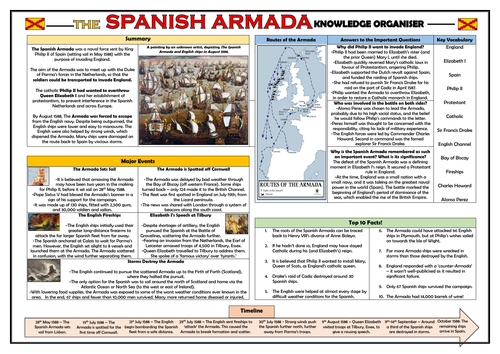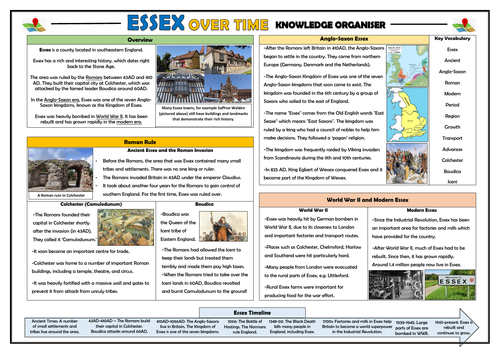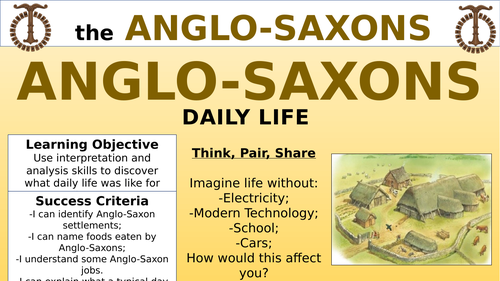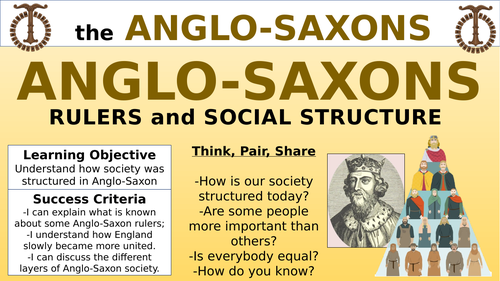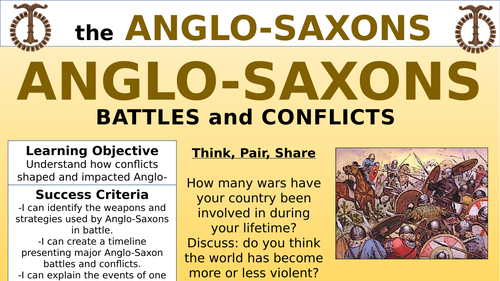
3k+Uploads
1950k+Views
2268k+Downloads
History

The Aztecs - KS2 Knowledge Retrieval Activities Pack!
This resource offers a wide range of knowledge retrieval activities for those studying the Aztecs at KS2.
There are a wide range of interesting and thought-provoking activities (over 30 slides in total) which help children to secure all of the important vocabulary, dates, and events from the unit. Research-approved activities include:
-Quick Fire Questions;
-Picture Stimulus;
-Retrieval Grid;
-Fill in the Blank;
-Crossword;
-Vocabulary Busters;
-Fact Dump;
-Rank 5;
-Theme Explorers;
-Anagrams;
and more
These resources are tried and tested in the classroom and have proven successful in helping children to consolidate key information about this historical topic.

Kings and Queens of Britain - Knowledge Retrieval Activities Pack!
This resource offers a wide range of knowledge retrieval activities for those studying Kings and Queens of Britain.
The activities prompt knowledge relating to a number of British monarchs, but particularly focus on:
-Alfred the Great and unifying the Anglo-Saxon Kingdoms;
-Edward the Confessor, the lack of an heir;
-William the Conqueror and the Battle of Hastings;
-King John and the Magna Carta;
-Queen Anne and the unification of Britain;
-Elizabeth II and the longest reign.
There are a wide range of interesting and thought-provoking activities (over 30 slides in total) which help children to secure all of the important vocabulary, dates, and events from the unit. Research-approved activities include:
-Quick Fire Questions;
-Picture Stimulus;
-Retrieval Grid;
-Fill in the Blank;
-Crossword;
-Vocabulary Busters;
-Fact Dump;
-Rank 5;
-Theme Explorers;
-Anagrams;
and more
These resources are tried and tested in the classroom and have proven successful in helping children to consolidate key information about this historical topic.

The Battle of Britain - History Knowledge Organiser!
This clear, detailed and visually-appealing resource offers a complete reference point for students learning or revising knowledge relating to the Battle of Britain. There are comprehensive sections on:
-British of Britain Overview;
-Major Events;
-Key People, Places and Equipment;
-Important Facts;
-Timeline;
-Key Vocabulary.
The resource is designed to be printed onto A3 or A4, and is provided as both a PDF and a Word version (so that you can edit if you want to). All images used are licensed for commercial use and are cited on a separate document (included). It is most suitable for students in upper KS2, but could also be used with lower KS3 students.

Roman Mosaics Information Text - Whole Class Reading Session!
This whole class reading session aims to develop children’s reading comprehension skills, whilst simultaneously building their understanding of Roman Mosaics.
The resource pack includes the full text (adapted from an internet information article for kids) and all of the activities for the session, which the class are guided through via a comprehensive PowerPoint presentation. The reading is followed by a series of activities aiming to develop children’s retrieval, explanation, inference, prediction and summarising skills. It also contains a vocabulary check immediately after the text is read to clarify any unfamiliar/ difficult language.
The tasks are comprised of quick-check questions, solo thinking, pair/ group discussions and deeper thinking activities.
The session is best suited for children in lower KS2, although with minor adaptations it could feasibly be used with slightly older or younger year groups. This resource is suitable for home/ remote learning. These resources are also suitable for home/ remote learning.

Roman Mosaics - Knowledge Organiser!
This clear, detailed and visually-appealing resource offers a complete reference point for students learning about Roman Mosaics as a part of their art and design study. This was originally used alongside a history study of the Romans.
It contains comprehensive sections on:
-Overview;
-Styles and Techniques;
-Significant Artists;
-Creative Ideas and Examples;
-Key Vocabulary;
-Timeline of Ancient Mosaics.
This resource can be adapted for all ages, but was originally designed for lower-KS2 children.
The resource is designed to be printed onto A3, and is provided as both a PDF and a Word version (so that you can edit if you want to). All images used are licensed for commercial use and are cited on a separate document (included).

Queen Elizabeth II - Knowledge Organiser!
This clear, detailed and visually-appealing resource offers a complete reference point for children learning about Elizabeth II, as a part of their PSHE study of Britain and its values, history study of ‘Significant Individuals’, or cross-curricular learning about monarchs. It is also a useful resource for learning relating to the platinum jubilee. It contains comprehensive sections entitled:
Overview;
Times in Her Life;
Important Vocabulary;
Elizabeth II Timeline;
Answers to the Important Questions;
Top Ten Facts.
The resource is designed to be printed onto A3, and is provided as both a PDF and a Word version (so that you can edit if you want to). All images used are licensed for commercial use.

Guy Fawkes Knowledge Organiser!
This clear, detailed and visually-appealing resource offers a complete reference point for children learning about the conspirator Guy Fawkes, particularly those completing a history study of ‘Significant Individuals.’ It contains comprehensive sections entitled:
Overview;
Times in His Life;
Important Vocabulary;
Guy Fawkes Timeline;
Answers to the Important Questions;
Top Ten Facts.
The resource is designed to be printed onto A3, and is provided as both a PDF and a Word version (so that you can edit if you want to). All images used are licensed for commercial use.

Tutankhamun Knowledge Organiser!
This clear, detailed and visually-appealing resource offers a complete reference point for children learning about Tutankhamun as a part of their history study. It contains comprehensive sections entitled:
Overview;
Key Details and Events;
Important Vocabulary;
Tutankhamun Timeline;
Answers to the Important Questions;
Top Ten Facts.
The resource is designed to be printed onto either A3 or A4, and is provided as both a PDF and a Word version (so that you can edit if you want to). All images used are licensed for commercial use.

Roman Army Non-Fiction - Whole Class Reading Session!
This whole class reading session aims to develop children’s comprehension skills whilst simultaneously building their understanding of life in the Roman Army.
The resource pack includes the full text (adapted from a BBC Teach article) and all of the activities for the session, which the class are guided through via a comprehensive PowerPoint presentation. The reading is followed by a series of activities aiming to develop children’s retrieval, explanation, inference, prediction and summarising skills. It also contains a vocabulary check immediately after the extract is read to clarify any unfamiliar/ difficult language.
The tasks are comprised of quick-check questions, solo thinking, pair/ group discussions and deeper thinking activities.
The session is best suited for children in lower KS2, although with minor adaptations it could feasibly be used with slightly older or younger year groups. This resource is suitable for home/ remote learning. These resources are also suitable for home/ remote learning.

Alan Turing - Knowledge Organiser!
This clear, detailed and visually-appealing resource offers a complete reference point for children learning about the mathematician and code-breaker Alan Turing. It contains comprehensive sections entitled:
Overview;
Key Details and Events;
Important Vocabulary;
Alan Turing Timeline;
Answers to the Important Questions;
Top Ten Facts.
The resource is designed to be printed onto either A3 or A4, and is provided as both a PDF and a Word version (so that you can edit if you want to). All images used are licensed for commercial use.

William Wilberforce Knowledge Organiser!
This clear, detailed and visually-appealing resource offers a complete reference point for children learning about the politician and abolitionist William Wilberforce as a part of their history study. It contains comprehensive sections entitled:
Overview;
Key Details and Events;
Important Vocabulary;
William Wilberforce Timeline;
Answers to the Important Questions;
Top Ten Facts.
The resource is designed to be printed onto either A3 or A4, and is provided as both a PDF and a Word version (so that you can edit if you want to). All images used are licensed for commercial use.

James I and VI - Knowledge Organiser!
This clear, detailed and visually-appealing resource offers a complete reference point for children learning about James I of England and VI of Scotland, as a part of their history study. It contains comprehensive sections entitled:
Overview;
Key Details and Events;
Important Vocabulary;
James I and VI Timeline;
Answers to the Important Questions;
Top Ten Facts.
The resource is designed to be printed onto either A3 or A4, and is provided as both a PDF and a Word version (so that you can edit if you want to). All images used are licensed for commercial use.

The Spanish Armada Knowledge Organiser/ Revision Mat!
This detailed and visually-appealing resource offers a complete reference point for students learning or revising knowledge of The Spanish Armada. It contains comprehensive sections on:
Overview and map;
Events - dates, images, descriptions, and key facts;
Timeline of Major Events
Answers to the Key Questions;
Key Vocabulary;
Top Ten Spanish Armada Facts.
Key words and ideas are underlined for easy reference. The resource is designed to be printed onto A3, and is provided as both a PDF and a Word version (so that you can edit if you want to). All images used are licensed for commercial use and are cited on a separate document (included).

Essex Over Time - History Knowledge Organiser!
This clear, detailed and visually-appealing resource offers a complete reference point for children learning about Essex over time as a part of their history study of ‘significant historical places in their own locality.’ It tracks the main events and developments within the county at significant moments in time, and contains comprehensive sections entitled:
Overview;
Roman Rule (inc. Roman invasion, Colchester, and Boudica);
Anglo-Saxon Essex;
World War II and Modern Essex;
Important Vocabulary;
Essex Timeline.
This was originally taught to children in years 2 and 3, but can be easily adapted for slightly older/ younger year groups if needed. The resource is designed to be printed onto A3, and is provided as both a PDF and a Word version (so that you can edit if you want to). All images used are licensed for commercial use.

Rosalind Franklin Knowledge Organiser!
This clear, detailed and visually-appealing resource offers a complete reference point for children learning about Rosalind Franklin, particularly those completing a history study of ‘Significant Individuals’, or children studying notable scientists as a part of their science curriculum. It contains comprehensive sections entitled:
Overview;
Times in Her Life;
Important Vocabulary;
Rosalind Franklin Timeline;
Answers to the Important Questions;
Top Ten Facts.
The resource is designed to be printed onto A3 or A4, and is provided as both a PDF and a Word version (so that you can edit if you want to). All images used are licensed for commercial use.

Anglo-Saxons Religion and Beliefs - Double Lesson!
In this engaging lesson, children develop an understanding of the religions and beliefs that were predominant throughout the time of the Anglo-Saxons. In particular, they learn about Pagan Gods and Goddesses, beliefs with regards to ceremony and the afterlife, and the Christian conversion catalysed by St. Augustine. The learning is guided by a clear and colourful PowerPoint presentation, which guides students through the following step-by-step journey:
-Knowledge recall - gauging what children already know about the Anglo-Saxon era (answers are provided);
-Understanding the key ideas of Paganism and how this replaced Christianity as the dominant belief system after the Anglo-Saxons settled;
-Learning about some of the Anglo-Saxon gods and goddesses (through a short video, which is hyperlinked into the presentation) and using a template to research their chosen God/ Goddess in more depth;
-Discovering Pagan beliefs about death, ceremony and the afterlife (again, through a short video about Sutton Hoo) and demonstrating their understanding through comprehension questions;
-Learning about St. Augustine and how he began the conversion of the Anglo-Saxons to Christianity;
-Producing a persuasive piece of writing, imagining that they are St. Augustine and they are convincing Ethelbert to become Christian.
-Self-reflecting on the extent to which they feel they have met the learning objective.
Included is the comprehensive PowerPoint presentation (21 slides) and the research template for the Pagan Gods and Goddesses activity.
In the past, I have used this lesson with children in upper KS2 (years 5 and 6) - the key learning is aligned with curriculum expectations for history. All images are licensed for commercial use.

Anglo-Saxons Daily Life - Double Lesson!
In this engaging lesson, children develop an understanding of Anglo-Saxons daily life, in particular: farming, jobs and village life, settlements and buildings and food. The learning is guided by a clear and colourful PowerPoint presentation, which guides students through the following step-by-step journey:
-Knowledge recall - gauging what children already know about the Anglo-Saxon era (answers are provided);
-Understanding that the scale of time between the Anglo-Saxon period and the modern day, helping to contextualise the how comparatively simple and harsh life was in the time of the Anglo-Saxons;
-Interpreting and analysing four sources (provided) in order to gain a deeper understanding of each of the key areas of Anglo-Saxon daily life;
-Completing their own extended research to find out more about one of the key areas of daily life;
-Composing a creative piece in which they put themselves in the shoes of an Anglo-Saxon villager;
-Comparing Anglo-Saxon daily life with other eras;
-Self-reflecting on the extent to which they feel they have met the learning objective.
Included is the comprehensive PowerPoint presentation (20 slides), the four sources for the source analysis activity, and the template upon which to record their findings.
In the past, I have used this lesson with children in upper KS2 (years 5 and 6) - the key learning is aligned with curriculum expectations for history. All images are licensed for commercial use.

Anglo-Saxon Rulers and Social Structure - Double Lesson!
In this engaging lesson, children are provided with an understanding of Anglo-Saxons rulers and social structure, through learning about:
how the different kingdoms of the Anglo-Saxons gradually unified;
three Anglo-Saxon rulers: Egbert, Alfred the Great and Athelstan;
the social hierarchy that governed Anglo-Saxon life.
The learning is guided by a clear and colourful PowerPoint presentation, which guides students through the following step-by-step journey:
-Knowledge recall - gauging what children already know about the Anglo-Saxon era (answers are provided);
-Understanding that Britain was split into Kingdoms under the Anglo-Saxons, and that these gradually unified over time to create England;
-Researching and learning about the three Kings - Egbert, Alfred the Great and Athelstan - who were each important in this transition towards unification;
-Learning about the social structure of Anglo-Saxon life under the King, and considering how life differed at each level of the hierarchy;
-Reflecting on what life was like for different people within Anglo-Saxon society;
-Comparing Anglo-Saxon society with the societal structure of modern Britain;
-Self-reflecting on the extent to which they feel they have met the learning objective.
Included is the comprehensive PowerPoint presentation (22 slides), and the worksheet for the researching activity.
In the past, I have used this lesson with children in upper KS2 (years 5 and 6) - the key learning is aligned with curriculum expectations for history. All images are licensed for commercial use.

Introduction to the Anglo-Saxons - Double Lesson!
In this engaging lesson, children are provided with an introductory understanding of the Anglo-Saxons, through learning:
-who the Anglo-Saxons were and when they lived;
-how they invaded and inhabited England;
-the names and basic features of the seven Anglo-Saxon kingdoms.
The learning is guided by a clear and colourful PowerPoint presentation, which guides students through the following step-by-step journey:
-Knowledge harvesting - gauging what children already know about the Anglo-Saxon era, and gathering what else they would like to know;
-Answering recall questions based upon the areas of history that they have learnt previously that are pertinent to this topic;
-Defining who the Anglo-Saxons were and when they lived;
-Watching an informative video providing some of the basic facts about Anglo-Saxon life, and then answering questions to show their understanding;
-Learning about how they invaded England, and after much fighting split the land into seven kingdoms;
-Completing a map-based activity to show where the kingdoms were and who lived there;
-Completing plenary activities to demonstrate their understanding of each of the concepts learnt in the lesson;
-Self-reflecting on the extent to which they feel they have met the learning objective.
Included is the comprehensive PowerPoint presentation (around 20 slides), the map template (in both Word and PDF) and the hyperlink to the video.
In the past, I have used this lesson with children in upper KS2 (years 5 and 6) - the key learning is aligned with curriculum expectations for history. All images are licensed for commercial use.

Anglo-Saxons Battles and Conflicts - Double Lesson!
In this engaging lesson, children develop an understanding of the battles and conflicts fought by the Anglo-Saxons. In particular, they consider weapons and strategies used by Anglo-Saxon fighters and create a timeline of the major battles throughout the Anglo-Saxon period, The learning is guided by a clear and colourful PowerPoint presentation, which guides students through the following step-by-step journey:
-Knowledge recall - gauging what children already know about the Anglo-Saxon era (answers are provided);
-Understanding that life in Anglo-Saxon times was harsh and often violent, and that battles and conflicts were frequent;
-Studying sources to identify the types of weapons that were used by Anglo-Saxon warriors;
-Learning about some of the strategies adopted by Anglo-Saxon armies;
-Creating a timeline of the key battles throughout the Anglo-Saxon period (the information about these battles is provided);
-Completing their own extended research to find out more about one of the key battles;
-Considering how Anglo-Saxon battles helped to shape England;
-Self-reflecting on the extent to which they feel they have met the learning objective.
Included is the comprehensive PowerPoint presentation (22 slides) and the information cards for the timeline activity.
In the past, I have used this lesson with children in upper KS2 (years 5 and 6) - the key learning is aligned with curriculum expectations for history. All images are licensed for commercial use.





